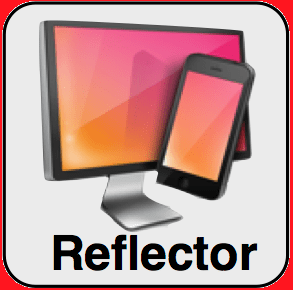

- #Finding your reflector 3 key how to#
- #Finding your reflector 3 key full#
- #Finding your reflector 3 key plus#
- #Finding your reflector 3 key series#

We calculate it the same way as above: if 4:1 is 4 times the light, then 8:1 will be 8 times the light, or 3 stops. You may need harsher lighting and possibly a black reflector to add blacks into the shadow side (rather than reflecting light onto it). Note that an 8:1 ratio can be a bit tough to create.

In fact, prints have a maximum contrast range of 4-6 stops, so unless you want one side of the face overexposed or the shadows pure black, I suggest keeping your lighting ratios at 8:1 or smaller. The 8:1 ratio requires 8 times as much light, or 3 stops, on the highlight side of the face compared to the shadow side.Īs you can see in the image above, 8:1 lighting is quite dramatic, and anything greater than 8:1 will not hold much detail on the shadow side of the face at all. It’s subtle, but you should be able to see it. So adjust the reflector distance until the meter settles on f/5.6.Īlso, it may help to study the image above and recognize the contrast range from the highlight to the shadow side of the face. To achieve a 2:1 lighting ratio, you’ll need to get your meter to read f/5.6 (which is one stop less light) on the shadow side. Now, you know that your highlight side has a reading of f/8. So if you are metering the shadow side nearer the reflector, shield the meter so the main light source isn’t hitting it. Note: If you are using a handheld meter, make sure to shield it from excess light that comes from the other side of your subject. Then bring in your reflector and use the light meter again, but this time measure the light falling on the side of the subject’s face that is farther away from the light source (from here on in, this will be referred to as the shadow side). (Keep your shutter speed the same for all measurements to maintain consistency.) Using a light meter, measure the light falling on the side of their face closest to the light source (i.e., the highlight side).
#Finding your reflector 3 key plus#
So knowing that plus what you know about f-stops, we can set up this lighting ratio.įirst, put your subject into the light where you are going to photograph them.

1:1 ratioĪs the numbers suggest, a 2:1 ratio occurs when one side has twice as much light compared to the other.
#Finding your reflector 3 key series#
In the next series of photos, I will demonstrate four different lighting ratios and how they were achieved.
#Finding your reflector 3 key how to#
Knowing this, you can figure out how to create and measure ratios. Likewise, 3 stops correspond to 8 times more light (2x2x2) and so on. If you want to narrow your aperture by 2 stops, you’ll need to add 2×2 – or 4 – times more light.
#Finding your reflector 3 key full#
Shutter speed full stops are easier to remember as they are generally doubled (with a couple instances of rounding, such as 1/8s to 1/15s).įinally, know that each full stop is double (or half, depending on whether you go down or up) the amount of light compared to the previous one.įor example, if you are shooting at f/4 and want to shoot at f/5.6, you will need to double the amount of light to get an equivalent exposure (you’ll need one more full stop of light). You also need to understand that shutter speeds are also representative of f-stops, with the full stops at 1s, ½s, ¼s, 1/8s, 1/15s, 1/30s, 1/60s, 1/125s, 1/250s, 1/500s, 1/1000s, etc. (A simple way to remember all the numbers is to memorize f/1 and f/1.4 all the other pairs are doubled from these with a few rounded off.) The aperture dial on your camera generally goes up in 1/3-stop increments, though the full stops for aperture are f/1, f/1.4, f/2, f/2.8, f/4, f/5.6, f/8, f/11, f/16, f/22, f/32, etc. To properly measure and understand lighting ratios, you need to know a few things.įirst, light is measured by f-stops. You see, your in-camera meter takes a measurement of the light reflecting off your subject – whereas a handheld meter can measure the amount of light falling on your subject and therefore gives you a more accurate value. While you can do it with the built-in meter in your camera, it is much easier and more accurate to use a handheld incident light meter. If you have four times as much light falling on the highlight side of your portrait, then the lighting ratio would be 4:1. So when calculating lighting ratios, you measure the light falling on the light or highlight side of the face and compare it to the light falling on the shadow side of the face.įor instance, if you have twice as much light falling on the highlight side of your portrait, then the lighting ratio would be 2:1. As a math term, a ratio is a comparison of one thing to another.


 0 kommentar(er)
0 kommentar(er)
